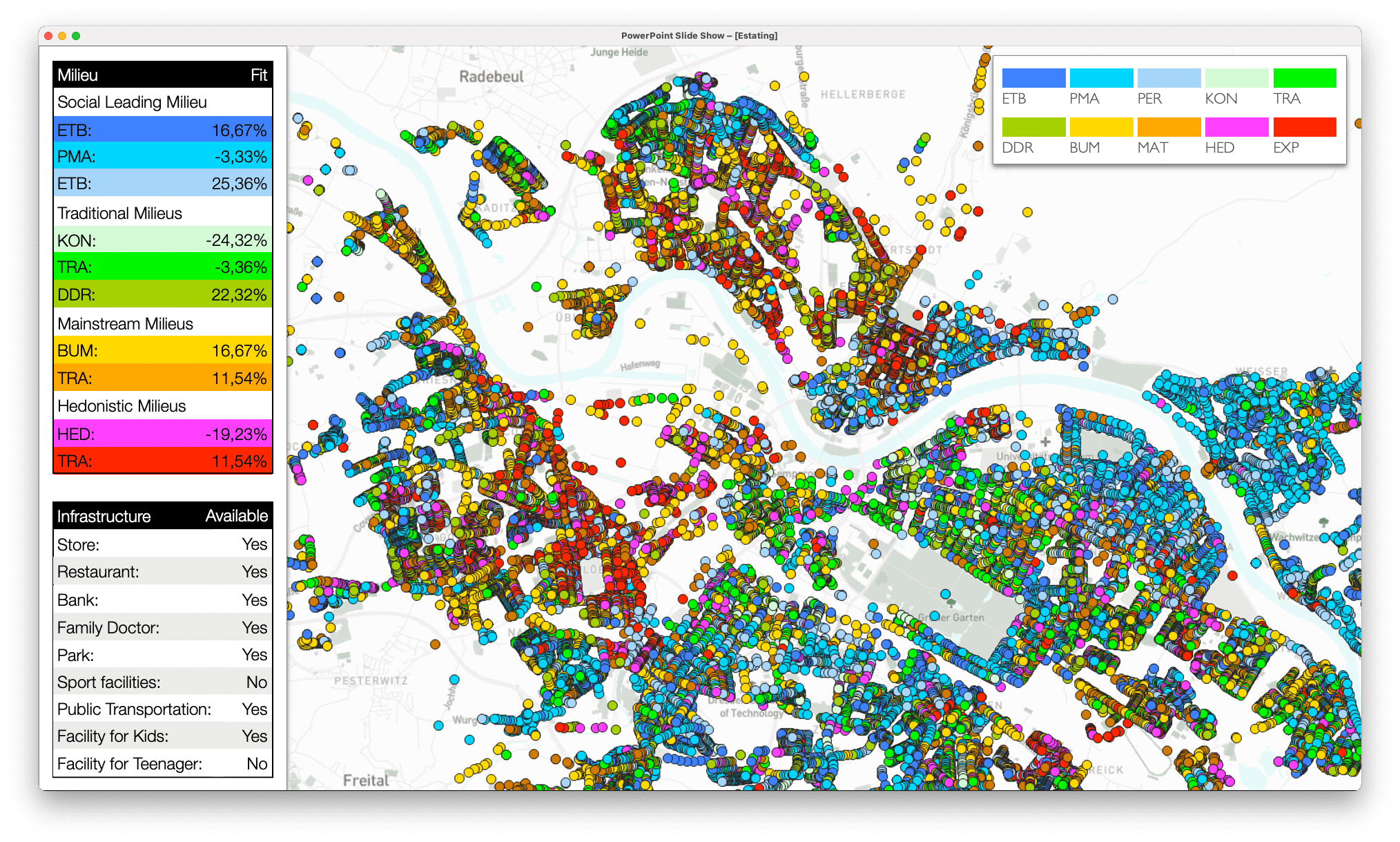The rise of data science and the use of AI that has enabled data scientists to solve complex challenges are largely due to the following 3 factors;
- Ready access to big data generated from e-commerce, businesses, governments, science, wearables, and social media.
- The improvement of machine learning (ML) algorithms serves as a consequence of large amounts of available data.
- Greater computing power and the rise of cloud-based services – which helps run sophisticated machine learning algorithms.
Data scientists use various forms of artificial intelligence to connect data insights to valuable outcomes that were previously not possible.
Challenge
Understanding optimal neighborhood profiles to inform Urban CRE strategy portfolio management and development
Solution
Within the framework of a research project, a procedure was developed with which optimal neighborhood profiles of arbitrary population groups can be calculated on the basis of the socio-economic panel (broad criteria including household composition, employment, occupation, earnings, health, and satisfaction indicators) The neighborhood profiles are based exclusively on structural and social infrastructure characteristics. The residential location requirements of the individual households surveyed were grouped in such a way that households with a similar requirement profile for a neighborhood could be grouped together accordingly. The profiles calculated in this way can also be compared with the given neighborhood profiles of any urban residential location and the percentage deviation from the optimal requirement profiles of the population groups can be shown.
Outcome
The results of the analysis show that a population can be well separated based on the meso-environment in terms of infrastructure feature combinations.
This eliminates the need for complex surveys on a scale that is still practiced today. Also, the number of data sources can be reduced to address data of the infrastructure features as well as geodata e.g. OpenStreetMap. Thus, expensive data procurement is no longer absolutely necessary.
Data Science Application
Algorithms from a wide range of disciplines came together for the analysis. For example, the preference analysis is based on a combination of singular value decomposition, bipartite network analysis, and machine learning in R. For the identification of locations in space, geoinformatics algorithms such as “shortest path tree” as well as fuzzy algorithms in R and C++ were used.
Insights gained from the model have broad application
It is possible to adapt the optimal neighborhood profiles model to include optimal rental range and purchase/sale valuation intelligence.
Developing bespoke in-house models enable scaling for existing business configurations and to explore, and support new business model evolution.
Ready to collaborate?
Solve complex problems with data science and AI. Make decisions based on evidence, not instincts for a sustainable edge.
Testimonial
Kenneth Schmidt: Dominik is a visionary leader and is an expert in developing innovative analysis tools that can help address the social issue affecting our urban environments. He is energetic and motivated. I enjoyed working with him immensely.
